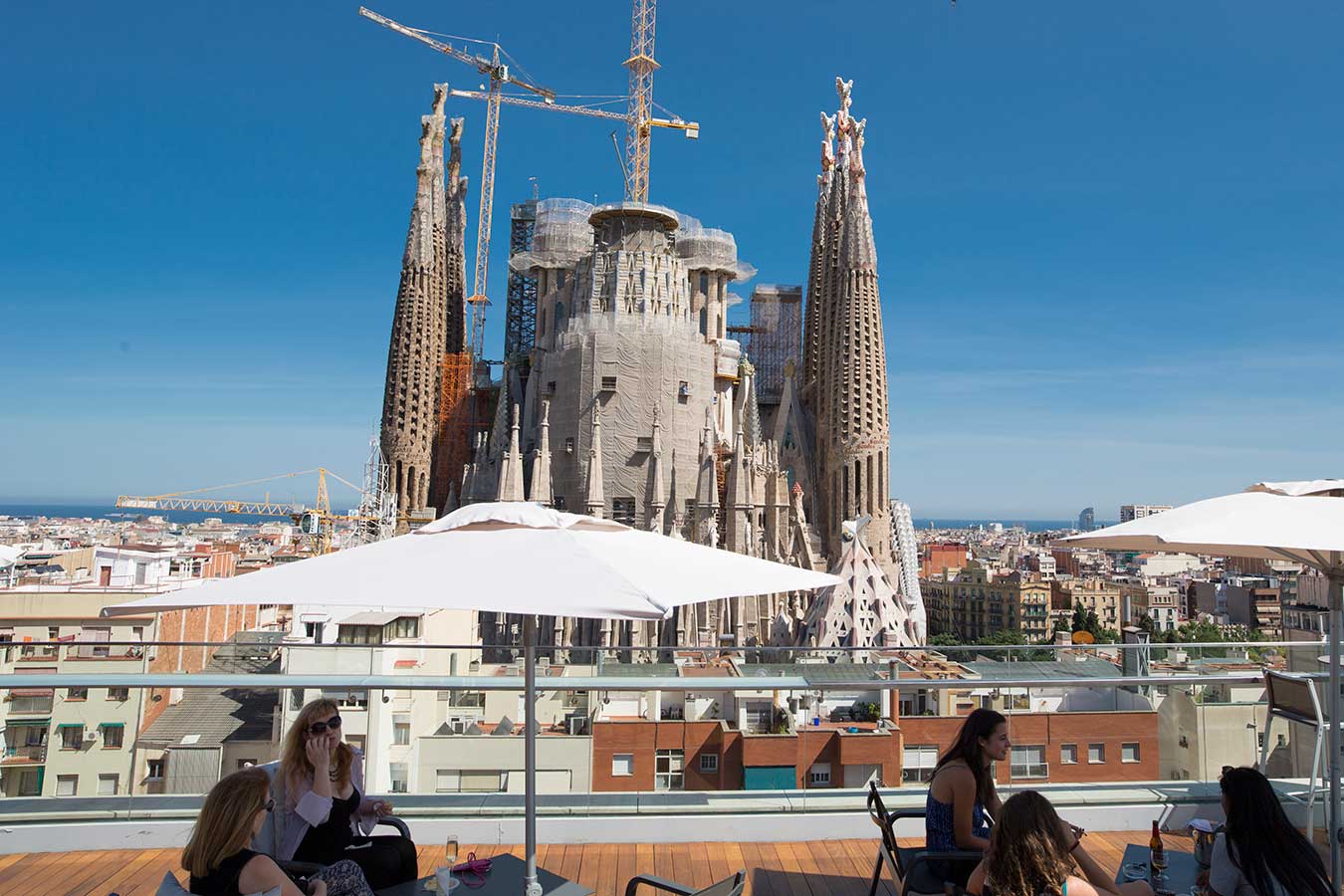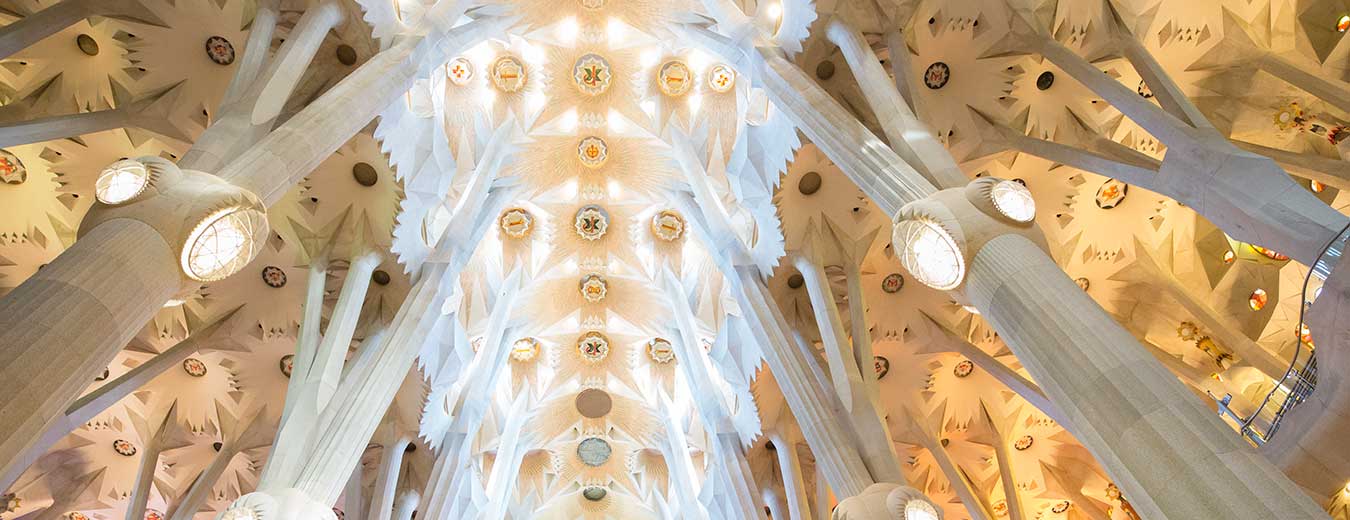

The Sagrada Familia Church in Barcelona is Antoni Gaudí's most impressive building. Gaudí worked on the church over a period of more than 43 years, without getting close to finishing thechurch. Now however, the church is finally getting close to completion, and construction is planned to end around 2030.
When finished, Sagrada Familia will have 18 towers, representing the 12 apostles, the 4 Evangelists, the Virgin Mary and Jesus. There wiil be three facades, each with an entrance and a different them: birth (Nacimiento), passion/crucifixion of Christ (Pasión) glory/resurrection (Gloria).
The tower of Christ will rise in the center of the church over the next couple of years and will be 65 meters taller than it is now. When completed, it will measure a total of 172,5 meters. Gaudí did not want his church to surpass the 173 meters of the Montjuïc Hill in Barcelona, but it will be the tallest church in the world, surpassing the church in Ulm Minster (that measures 161,50 meters) or other tall churches like Our Lady of Peace at the Ivory coast, the cathedral of Cologne and the cathedral of Rouen.
La Sagrada Familia is sometimes called Barcelona's third cathedral, after the two other churches La Seu de la Santa Creu i la Santa Eulalia (Barcelona's only real cathedral) and Santa Maria del Mar, also called Cathedral of the Sea.
The church of Sagrada Familia is easily accessible and can be reached by metro (L2 or L5) or bus (for example bus number h10).
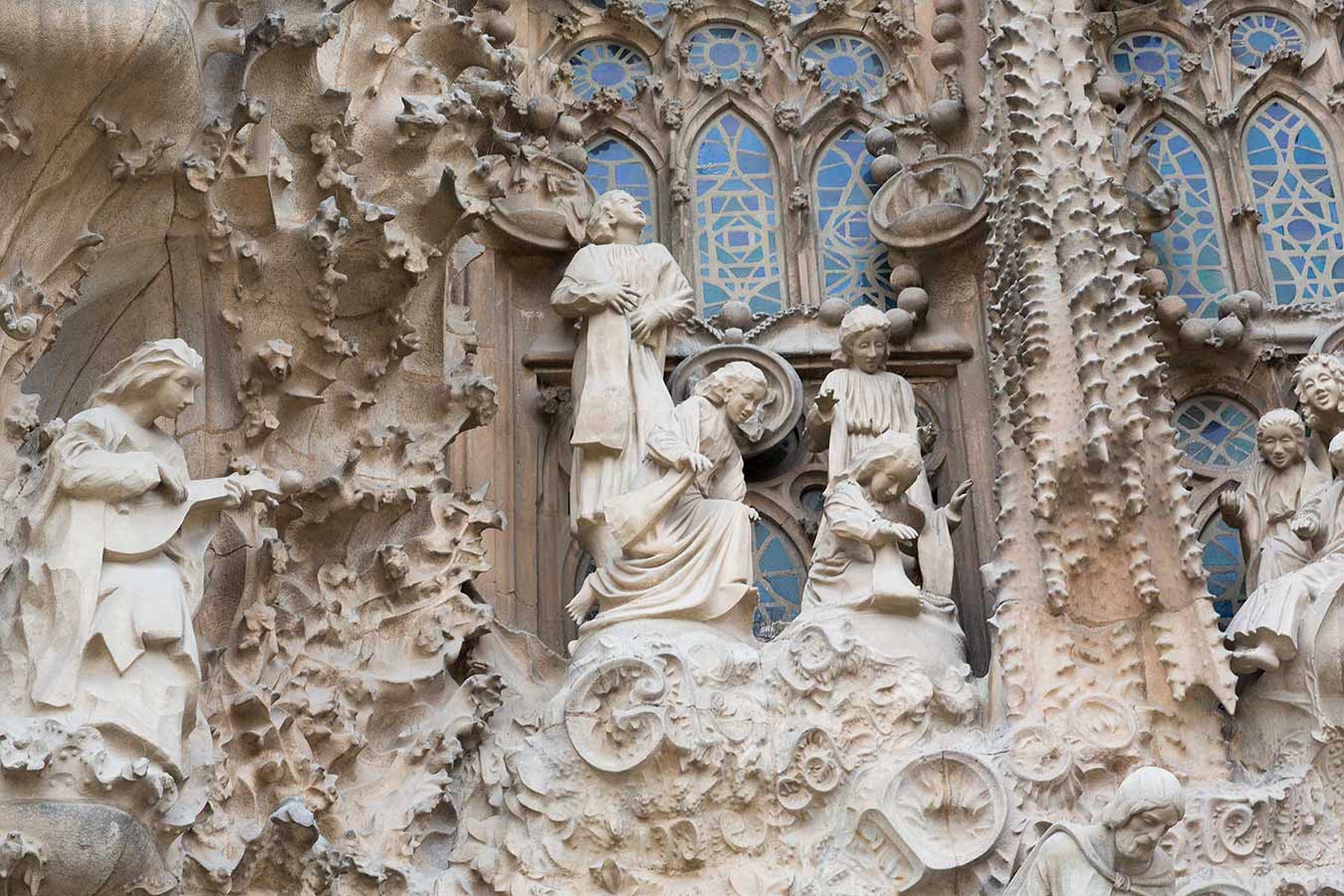
Construction on the church began on March 19th 1882, on the feast of Saint Joseph. However, the planning goes far beyond this date. Allready in 1866, the catholic association Associació de Devots de Sant Josep was founded by Josep Maria Bocabella i Verdaguer.
This association was to plan and pay for the construction of the church. Bocabella had visited Rome a few years earlier and the trip had made him a fervent follower of Sant Joseph. The association got more than 600.000 followers over the next years.
In 1881 Bocabella bought a terrain in Barcelona and in 1882 construction began. The first archtiect of the church was Francisco de Paula del Villar y Lozano, a Spanish architect born in Murcia in South-Eastern Spain. Villar had studied architecture in Madrid (finishing in 1852) and he moved to Barcelona the following year.
Villar had designed several parish churches and the apse of the basilica of the Monastery oof Montserrat (Gaudí worked with Villar on this proyect) and Villar had restored the gothic churches of Santa María del Pi in Barcelona and Santa María de Vilafranca, when in 1877 he was appointed architect of the Sagrada Familia.
However, in 1883 Villar resigned from the projet after only finishing the Neo-Gothic crypt of the church. A committee headed by Antoni Gaudí's former teacher at the school of architecture, Joan Martorell, appointed the Catalan architect from Reus to direct the construction from then on.
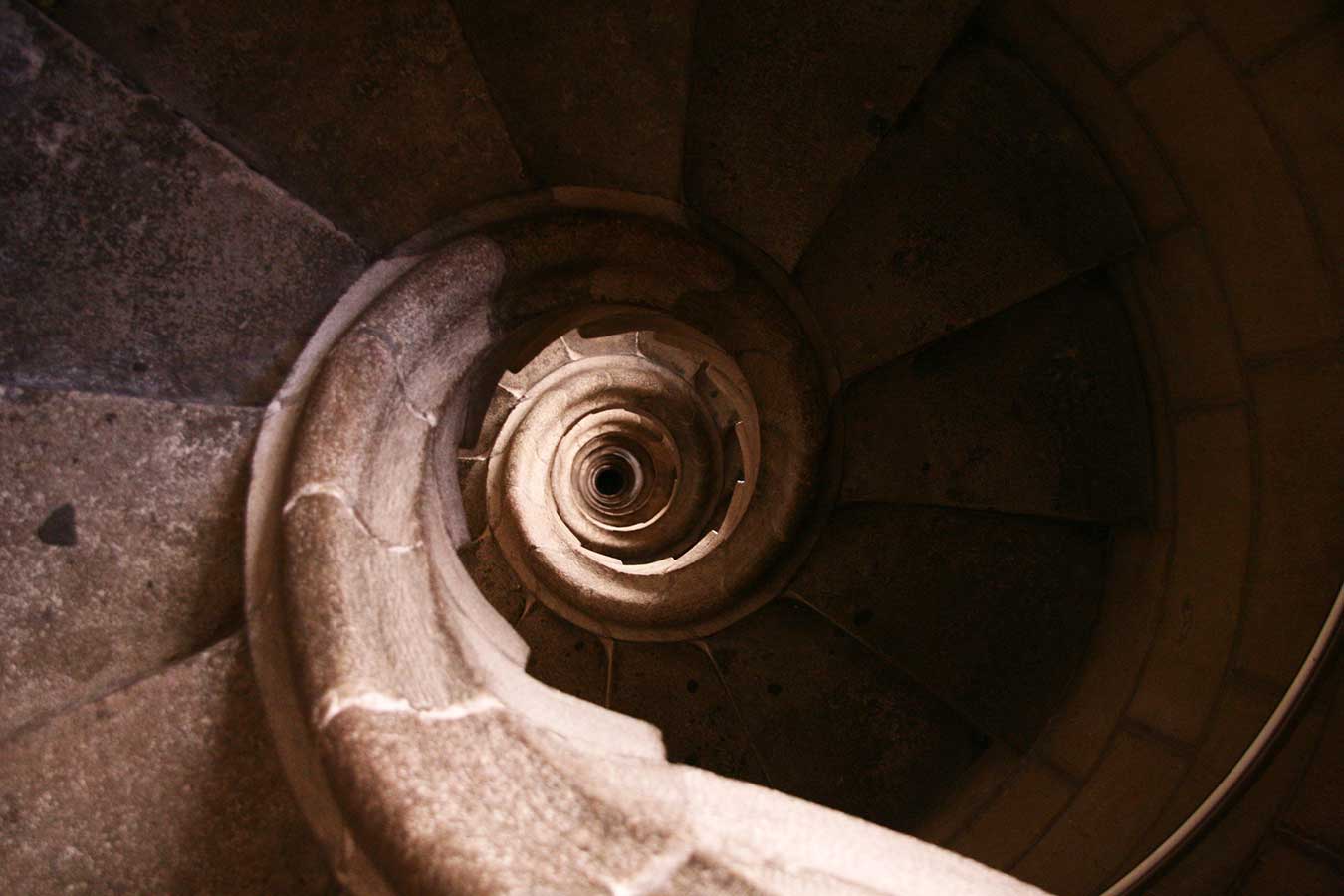
After the death of Gaudí, work continued under the architect Domènec Sugrañes i Gras, but work was stopped by the Spanish Civil War (1936-1939). After the war, the following architects succeeded each other: Francesc Quintana, Isidre Puig Boada, Lluís Bonet i Gari and Francesc Cardoner.
In 1954, construction began on the Passion facade. The towers were completed in 1976. In 1987 the local sculptor Josep Maria Subirachs and his team began to design the sculptures and the ornaments of the facade
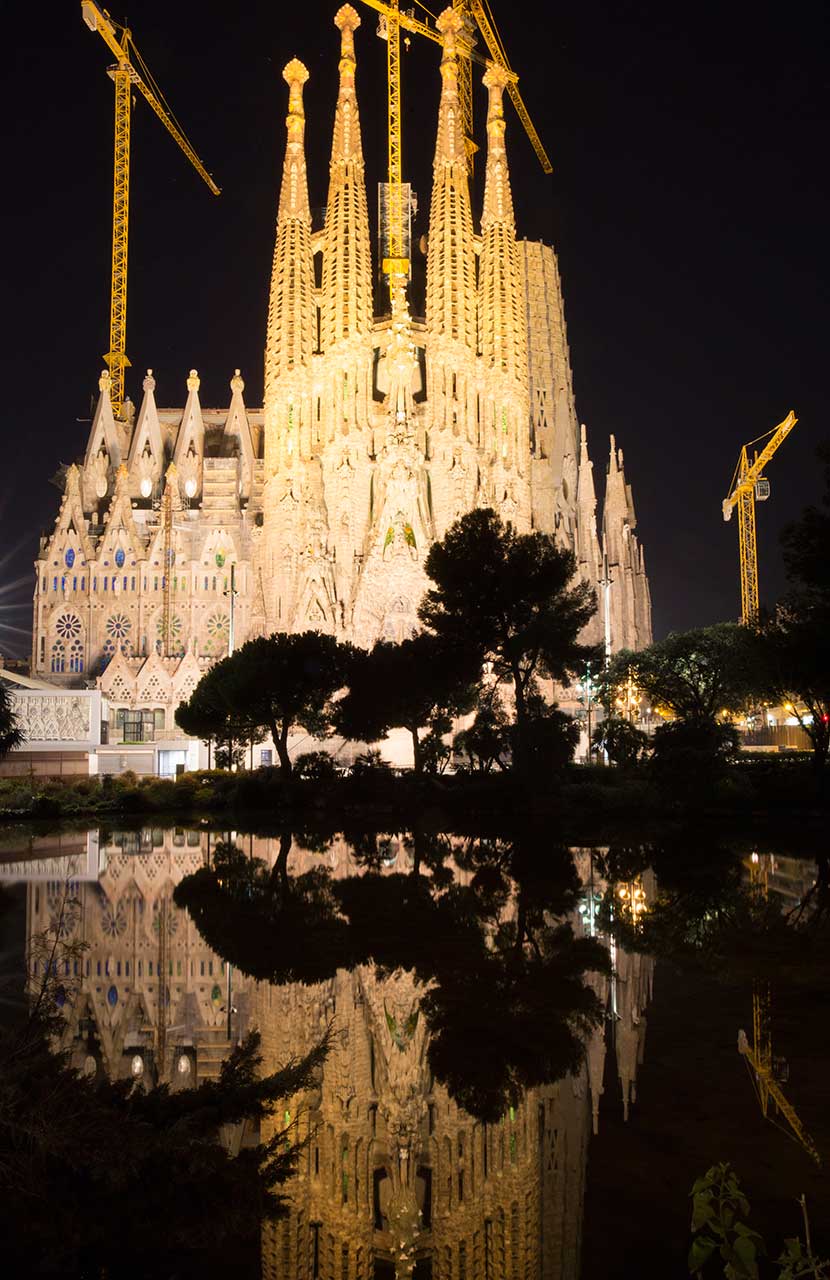
The current directors are Jordi Fauli and Jordi Bonet i Armengol, who is the son of son of Lluís Bonet. Other important people to work on the church were Mark Burry from New Zealand, and sculpturists like Jaume Busquets i Mollera from Girona and Etsuro Sotoo from Japan. However, the artist to make the biggest impression, was Josep Maria Subirachs i Sitjar (1927-2014), who was to design the facade of Glory.
The main architect to work on the Passion Facade was Josep María Subirachs. Subirachs started to work on Sagrada Familia in 1987.
The payments for the church do not come from public money, the construcion is a fully private project begun by Bocabella. No government or official church sources are associated with the construction.
In the beginning of the project private patrons funded construction. This meant that , and Gaudí famously said: "My client (God) is not in a hurry". However, a significant anomymous donation in 1892 meant that Gaudí could change his project and make it into the enormous church that it is Today. Nowadays, Money comes from tickets purchased by visitors, meaning that tourism is the main economical source.
In 2018, the trustees of the Sagrada Família settled to pay 36 million € to the city authorities, and so got the building permit that had not been acheived before.
Before Covid-19 the church was meant to be finished in 2026, but since the pandemic affected the church's economy (numbers of visitors plunged in 2020 and so did the ticket sale): in 2019, 100 million Euros were used on building, but in 2020 the budget was lowered to 17 million Euros.
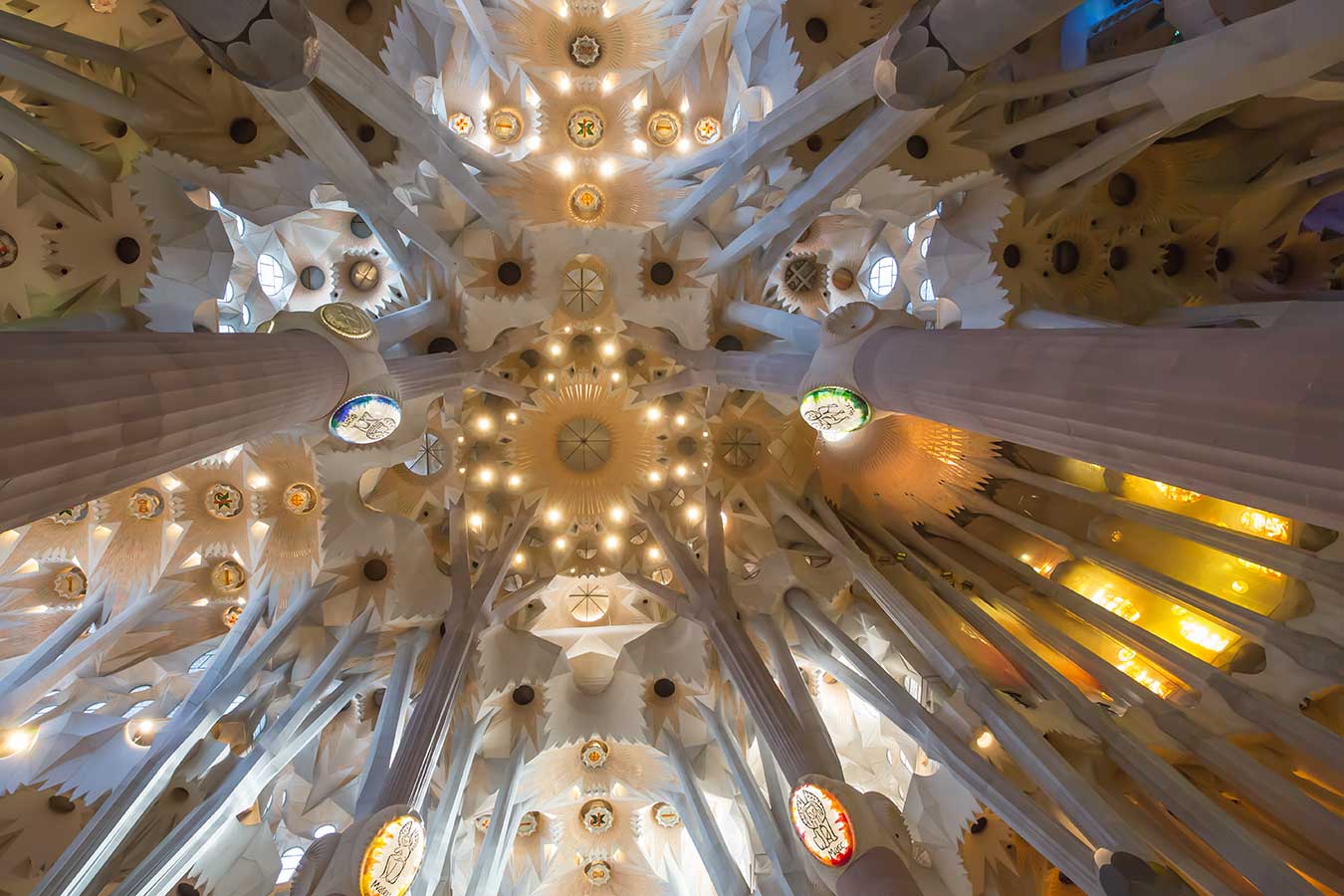
The finished church will have a total of eighteen spires, representing the Twelve Apostles, the Virgin Mary, the four Evangelists and Jesus Christ.
The finished church will have three different facades: The Nativity Facade, The passion facade and the Facade of Glory. When Gaudí worked on the church he wanted to start construction on the nativity facade. Starting on this facade meant that probability was higher that the church would be finished, he argued, since the facade of Nativity is more uplifting and positive than the Passion Facade.
The Nativity facade is directed towards northeast where the sun rises. The rising sun symbolizes the birth of Christ, whereas the Passion facade is directed towars southwest where the sun sets, representing the dearh of Christ.
The nativity facade tells the story of the birth of Christ, with multiple motif groups and porticos. Gaudí himself finished most of this facade and its many sculptures crafted by his collaborator, the sculptor Llorenç Matamala i Piñol.
The facade is divided by three porticos dedicated to Faith (right side), Hope (left side) and Charity (in the centre). In the very center in the portico of Charity we see the Holy Family (in Spanish: la Sagrada Familia): the new-born child (Christ), Mary and Joseph. They are represented together two animals: an ox and a donkey, as has been tradition since the earliest Christian art.
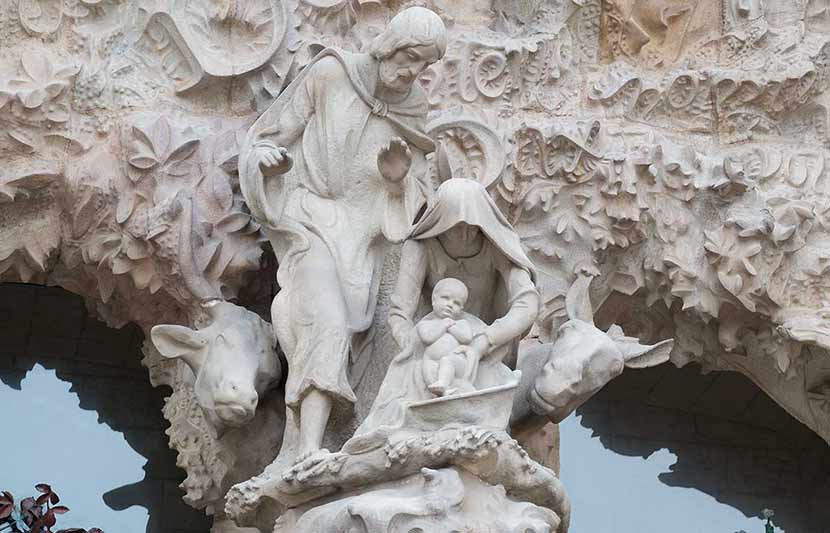
At the top hovers the The Tree of Life, a green tree with doves symbolizing peace. Further up you will see a pelican and two angels carrying bread and wine - the symbol of the Eucharist or Holy Communion. Also there are sheaves of wheat and chalices with grapes on the towers symbolizing the Eucharist.
The pelican is a symbol of Christ: according to a classic myth if the cubs of the pelican are hungry, the pelican makes a hole in his own chest and gives blod to the cubs, being a perfect symbol of Christ sacrificing himself for humanity.
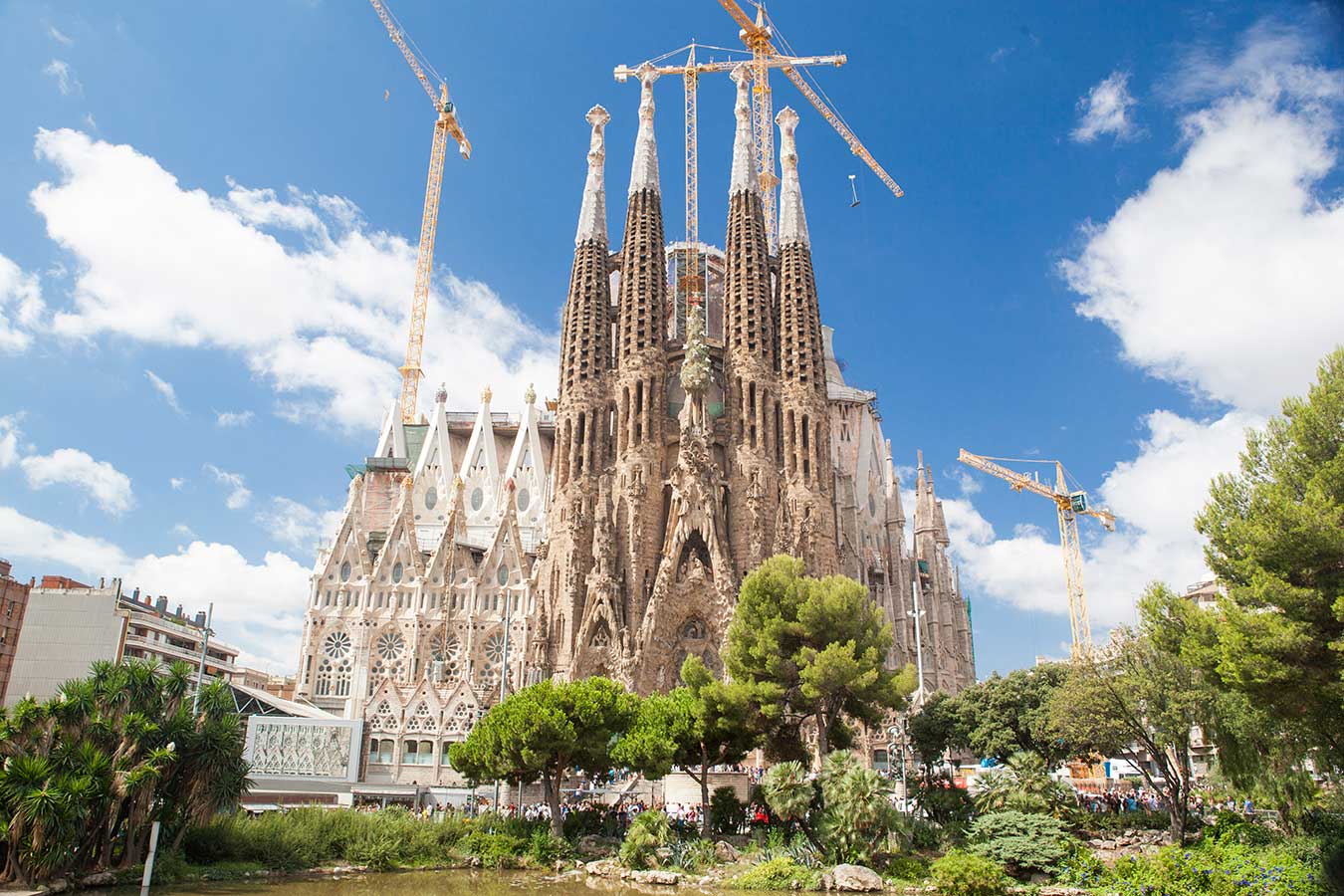
On the right side of the holy family, the Three Kings come with gifts to Jesus and on the left side we see the shepherds. Above the holy family there is a choir and we see a total of seven instruments, celebrating the birth of Christ. Further up, there is a green pine tree: this is the tree of life and doves land on the tree.
Above, the facade has other symbols: two of the colums are supported by a turtle and a tortoise: the turtoise (land turtle) is closest to the mountain of Tibidabo and the sea turtle points the way to the mediterranean, the Sagrada Familia being located right in the middle between land and sea.
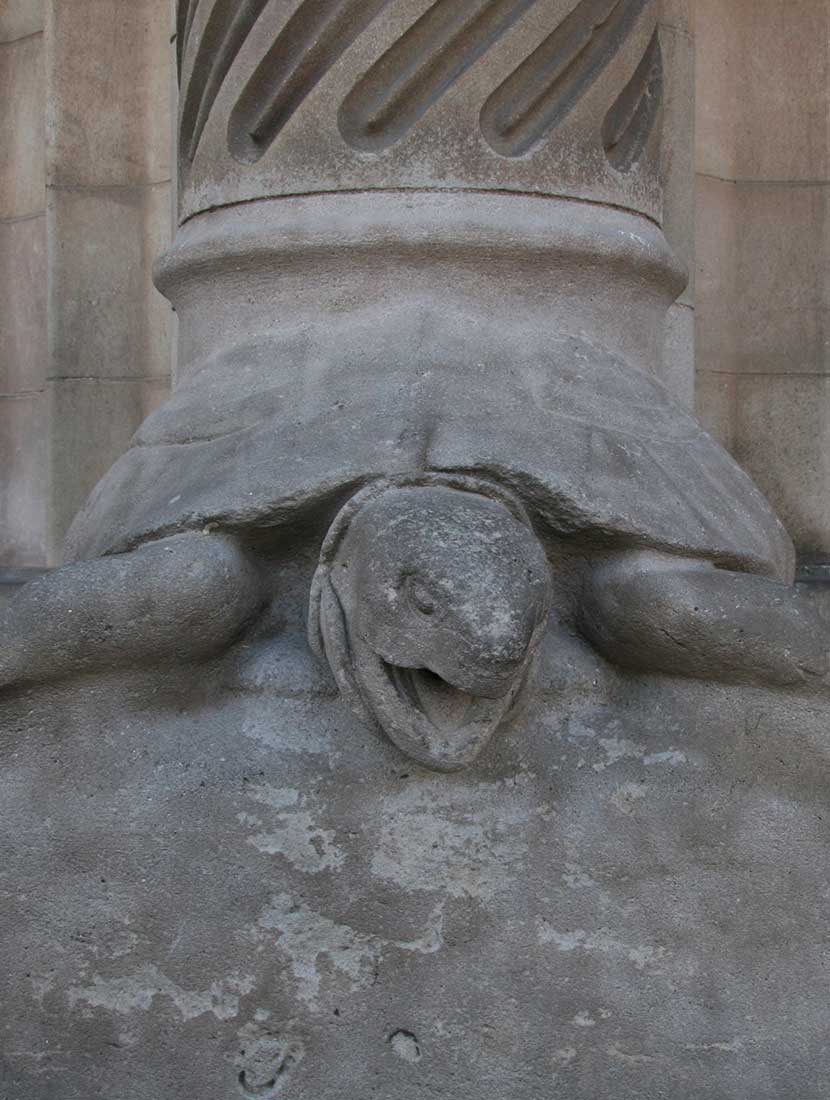
In the hope portico, the Flight into Egypt and execution of all male children two years old are among the representations.

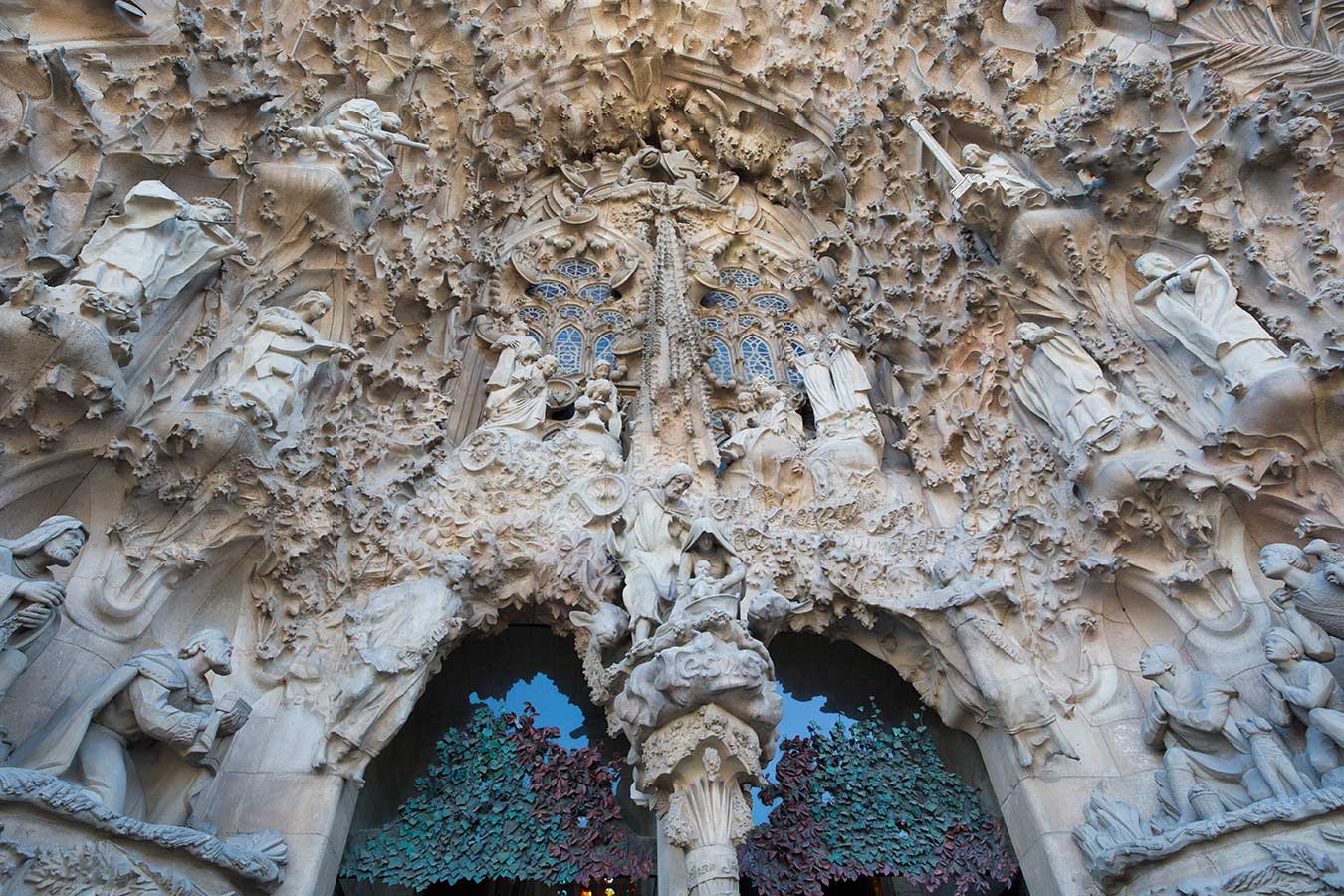
The Passion facade tell the story of the death of Christ. The story is told like an 'S', from the bottom left to the bottom right, the across the facade towards the superior left corner and towards the center. Here you will find the Last Supper, the Kiss of Judas, Ecce homo and the trial of Jesus and the crucifixion of Christ. Further up, the Calvary, or Golgotha, is represented, including The Three Marys. Also present are Longinus, Veronica and other saints. Further up, a bronze sculpture of Jesus sitting on a bridge representing the ascension of Christ, can be seen.
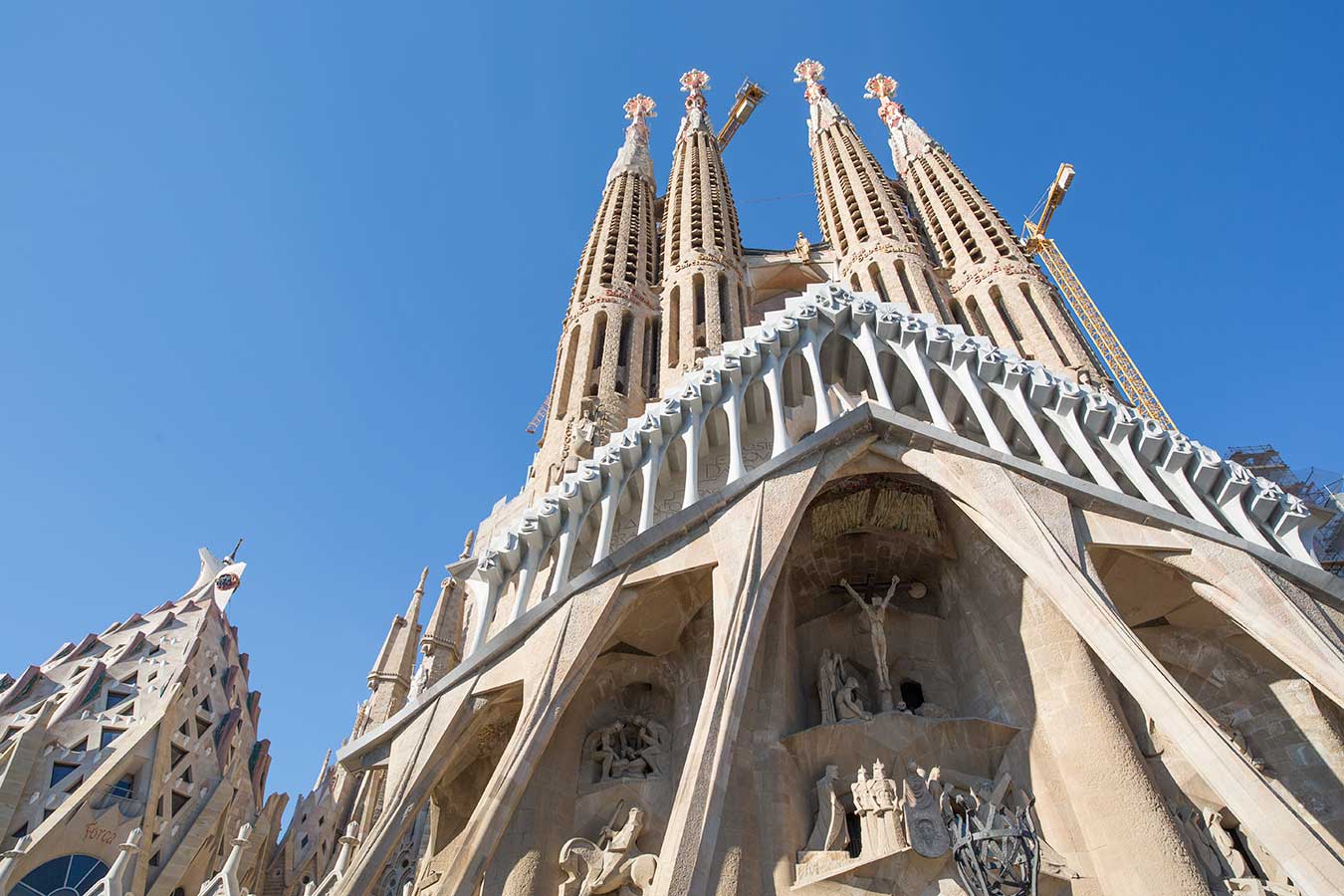
In the far-left corner, the disciples are gathered with Jesus for the Last Supper.Further to the right we see the kiss of Judas and next to him a cryptogram with 16 numbers. This enigmatic square made up of sixteen different numbers form a riddle. If you sum the numbers from right to left or from top to bottom or diagonally, you will get the number 33, the age of death of Christ. There are no less than 310 different combinations that makes the number of 33. The crucifixion is the central event of the Passion and it was Subirachs who designed the cryptogram.
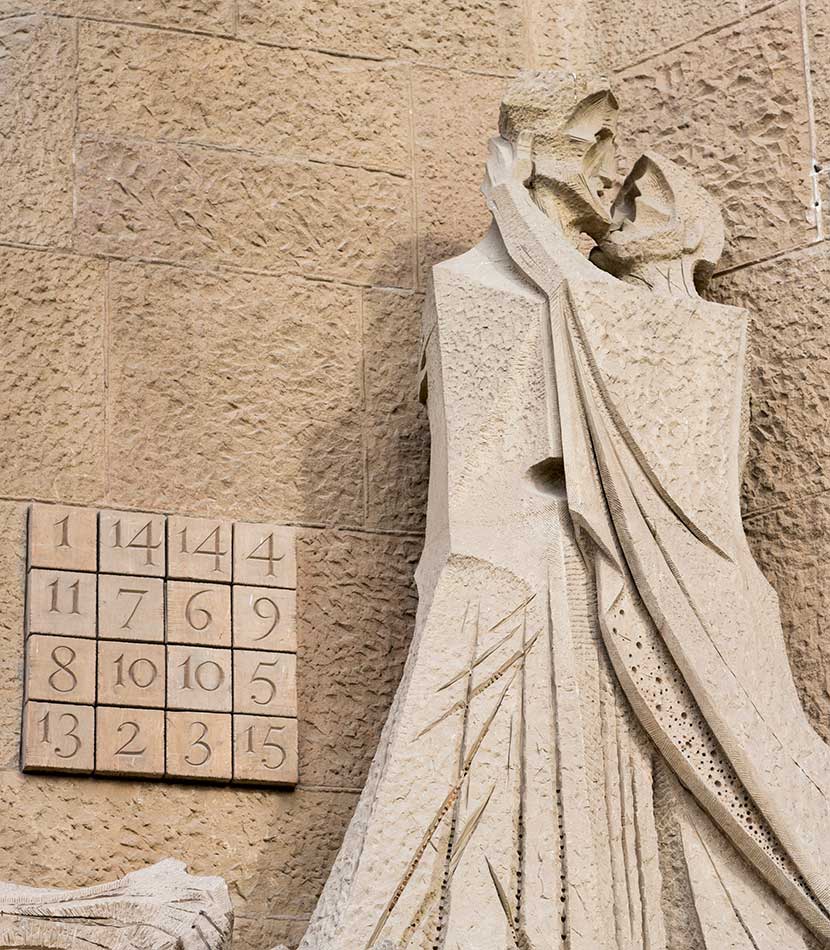
Subirachs cryptogram takes the cryptogram from a German renaissance artist Albrecht Dürer and his engraving Melancholia I from 1514.
However, Subirachs makes modifications to Dürer's magic square. In the German artist's cryptogram, the columns, rows, and diagonals sum 34 and not 33 (the numbers in Dürer's cryptogram are: 16-2-3-13, 5-10-11-8, 9-6-7-12 & 4-15-14-1)
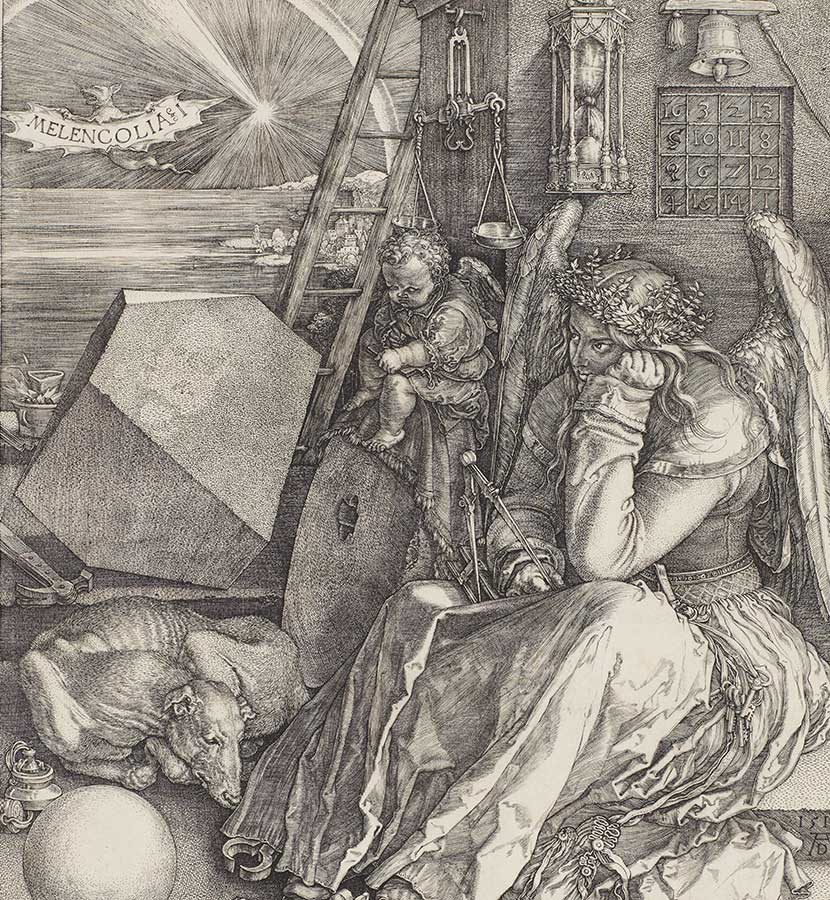
Opposite of Judas, Peter's three denials and the rooster are seen. Further to the right comes the judgement, and Jesus carrying the cross towards Golgotha, and at the top the crucifixion.
The Passion facade is filled with symbols and cites from the Bible. Below you will find one of them, saying "El que estès fent fes-ho de pressa", or in English the full verse says: As soon as Judas took the bread, Satan entered into him. So Jesus told him, 'What you are about to do, do quickly".
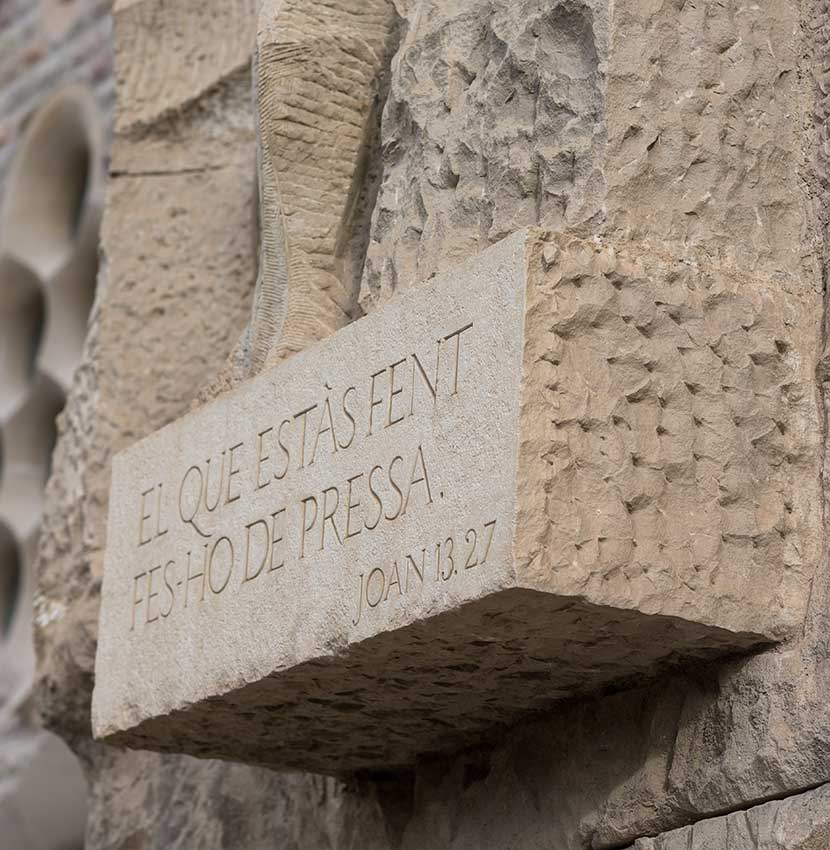
The Christian saint Veronica, is not described in the Bible, but comes from the extra-biblical sacred tradition, the so-called Apocrypha. The Christian tradition describes how Veronica was moved with sympathy, when she saw Jesus carrying the cross to Golgotha. She then offers him a veil to wipe his forehead. When Jesus hands the veil back to Veronica, the image of Christ has been impressed upon it (see the photo below).
If you look at Roman soldiers on the Passion Facade (see the photo below) and think of Star Wars, you are not the only one. The helmets of the Roman soldiers standing behind veronica are close to the hemlets of the stormtroopers and Darth Vader.
You may think that Subirachs was inspired by the famous Hollywood movie, but that is not the case. It is the other way round: Subirachs and George Lucas, the producer of Star Wars, designing Darth Vader and the Stormtroopers, are inspired by the same source: the famous sculptures at the roof top terrace of Casa Milà designed by Antoni Gaudí.
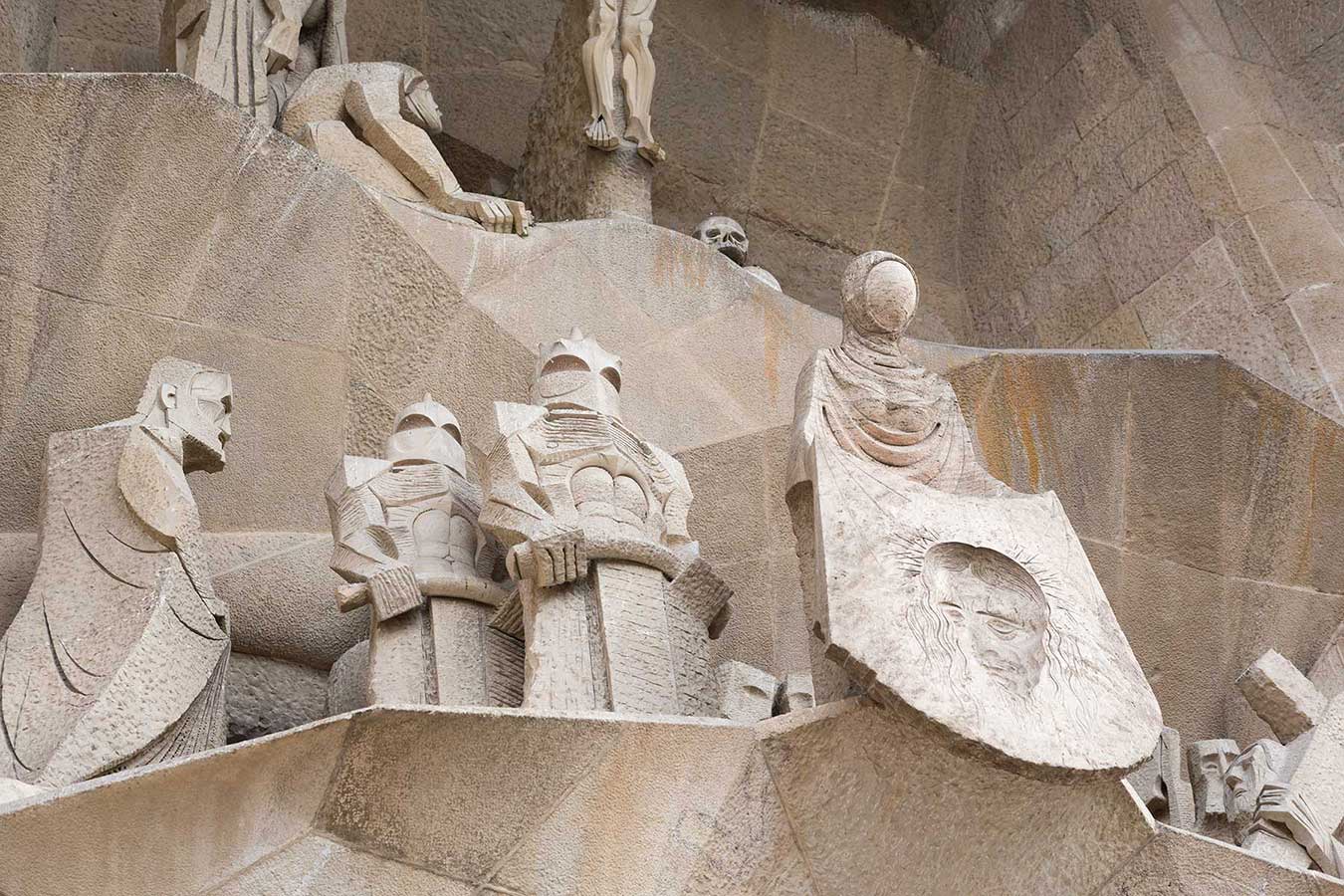
Saint Longinus is the Roman soldier that acording to the Gospel of John put a lance to Jesus when hanging on the cross. Therefore he gives Jesus his fifth wound. In the Bible the soldier has no name, but in the aprocryphe Gospel of Nikodemus he is called Longinus. Afterwards, he converted to Christianity. There are several exampleres of Longinus' lance in the catholic church, one of the relics is in the Basilica of Sant'Agostino in Rome.
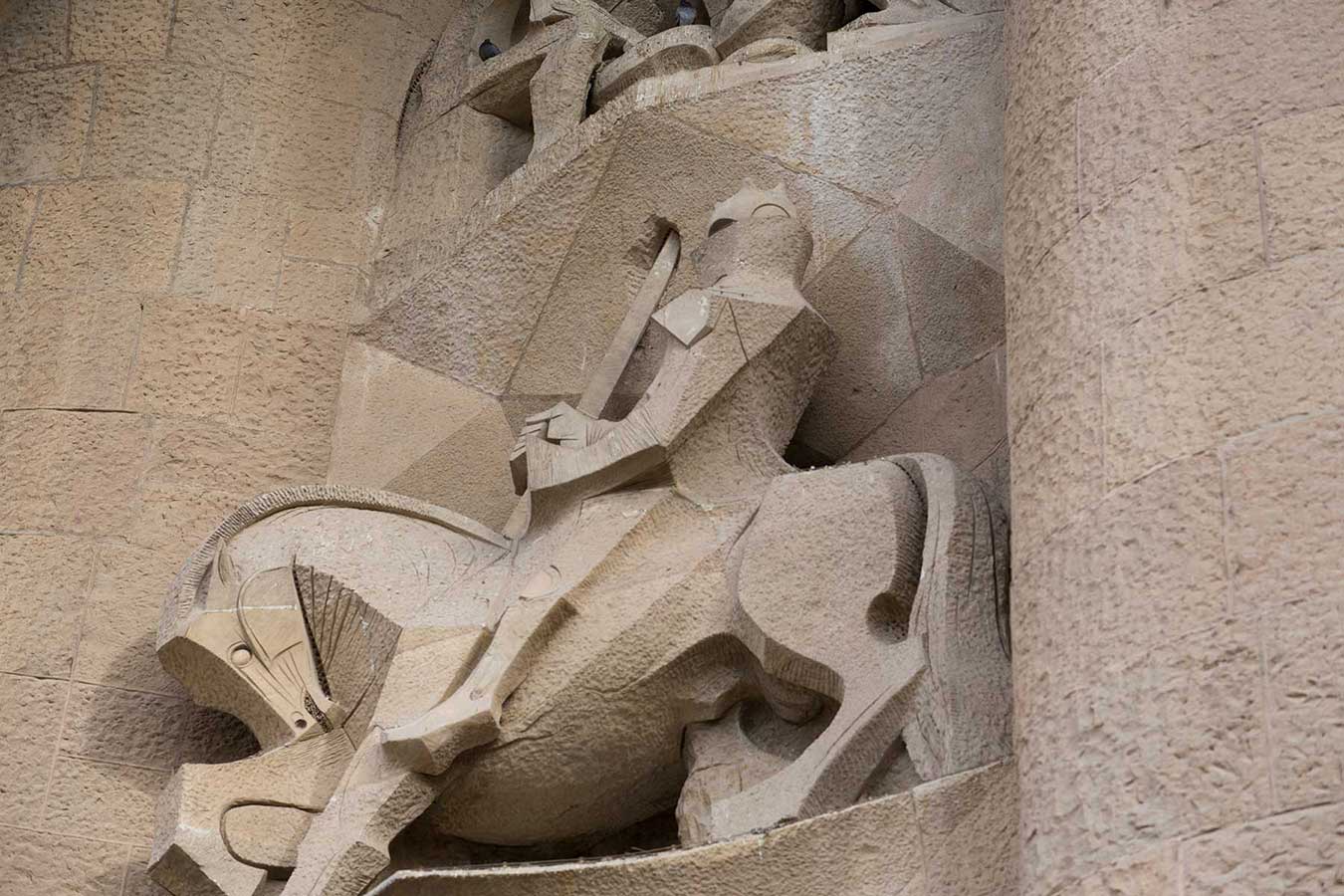
The Glory facade is going to be the largest of the three facades and the main entrance to the church will lead through this facade when finished. It represents Christ's ascension to God. Also represented will be Purgatory, Hell, Seven virtues (kindness, diligence, patience, charity, temperance, humility, chastity) and Seven sins (greed, lust, pride, gluttony, sloth, wrath, envy). Other themes are Death, Final Judgment, and Glory.
This facade is still to be finished, which will happen over the next year. But the facade will represent the Glory of resurrection. Now, construction work is going on at this part of the church.
When the Glory facade is finished, it will have three porticos with the Christian values faith, hope and charity. Higher there will be letters forming the phrase "I believe in one God, the Father, the Almighty, maker of heaven and earth". At the very top, there will be a representation of the Final Judgement.
On the ground of the Sagrada Família is a school that was created for the children of the construction workers at the church. The school was moved in 2002 and has been turned into a museum.
The roof has an interesting structure made up of brick forming a hyperbolic paraboloid, a geometric structure similar to a horse saddle - or a Pringles potato chip!
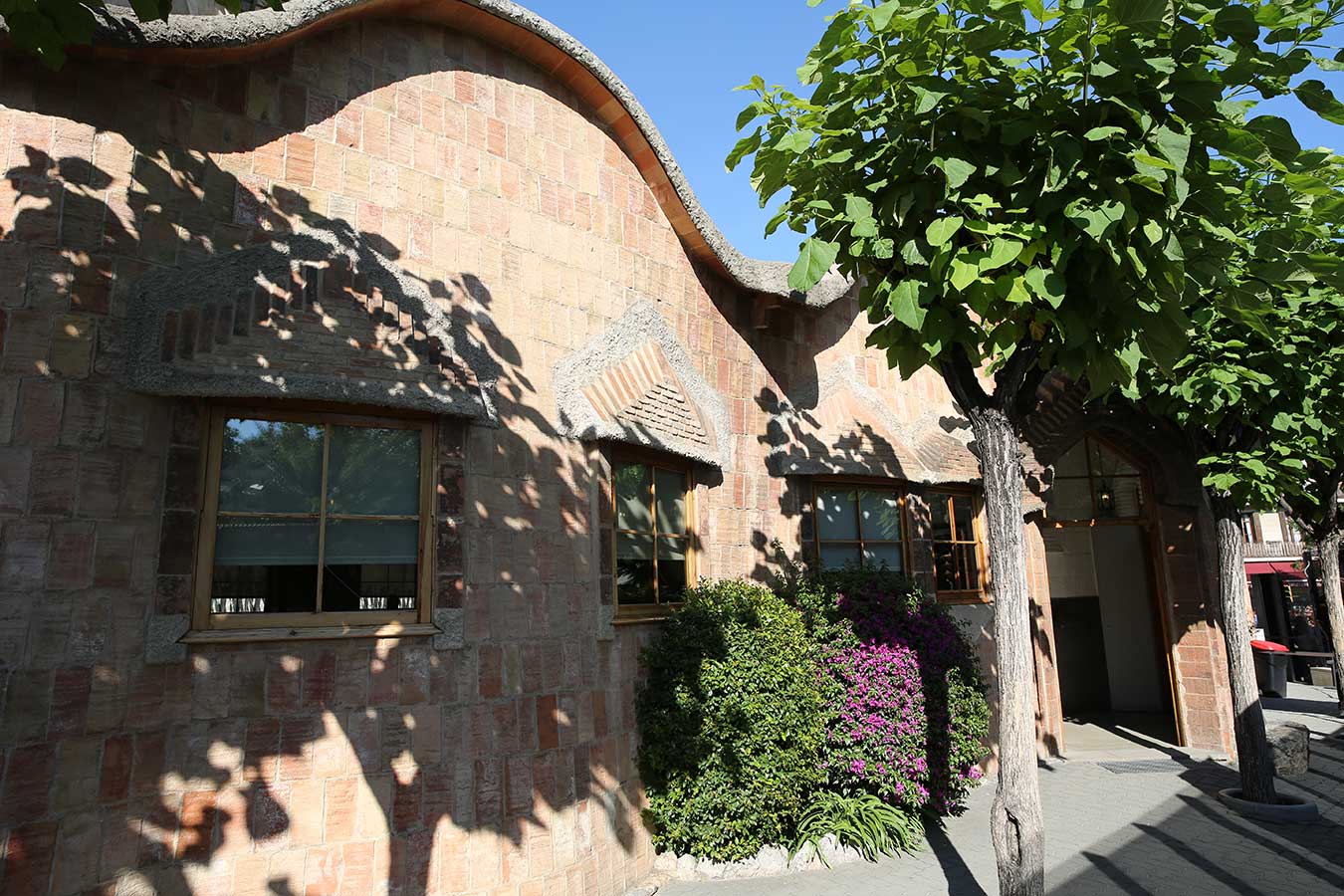
The interior of the church is almost finished. Most of this part of the church was finished when the church was consecrated on November 7th, 2010 by the former Pope Benedict XVI . A total of 36 columns support the ceiling.
The interior is suprisingly modern for the visitor who has only seen Gaudí's nativity facade.
In the center are four columns made out of porphyry. These columns have been reinforced by concrete.

The church was consecrated by the pope Benedict XVI on 7 November 2010 and declared a minor basilica.
Sagrada Familia was planned to have a location right in the center of Barcelona and from the church there is the same distance to the sea and to the mountains, to the river Besòs towards north and the Llobregat River towards south. So, when the route for the fast train (AVE, Tren de alta Velocidad) was planned, it was going to come right under the Sagrada Familia.
Many inhabitant in Barcelona were afraid that it would damage the building, and an association called l'AVE pel Litoral (the fast train to the beach) was created. However, measurements made by UNESCO showed that the ground under the church and the church itself would be strong enough to support the weight of the church in spite of the tunnel.
Another problem has been stone delivery for the church: The quarry outside of Barcelona that had been producing stone for the church until then was closed a few years ago, and workers from the Sagrada Familia had to find a stone that had the same colour and the same structural abilities. It was finally found close to Liverpool in Withnell (Lancashire) in Northwestern England.
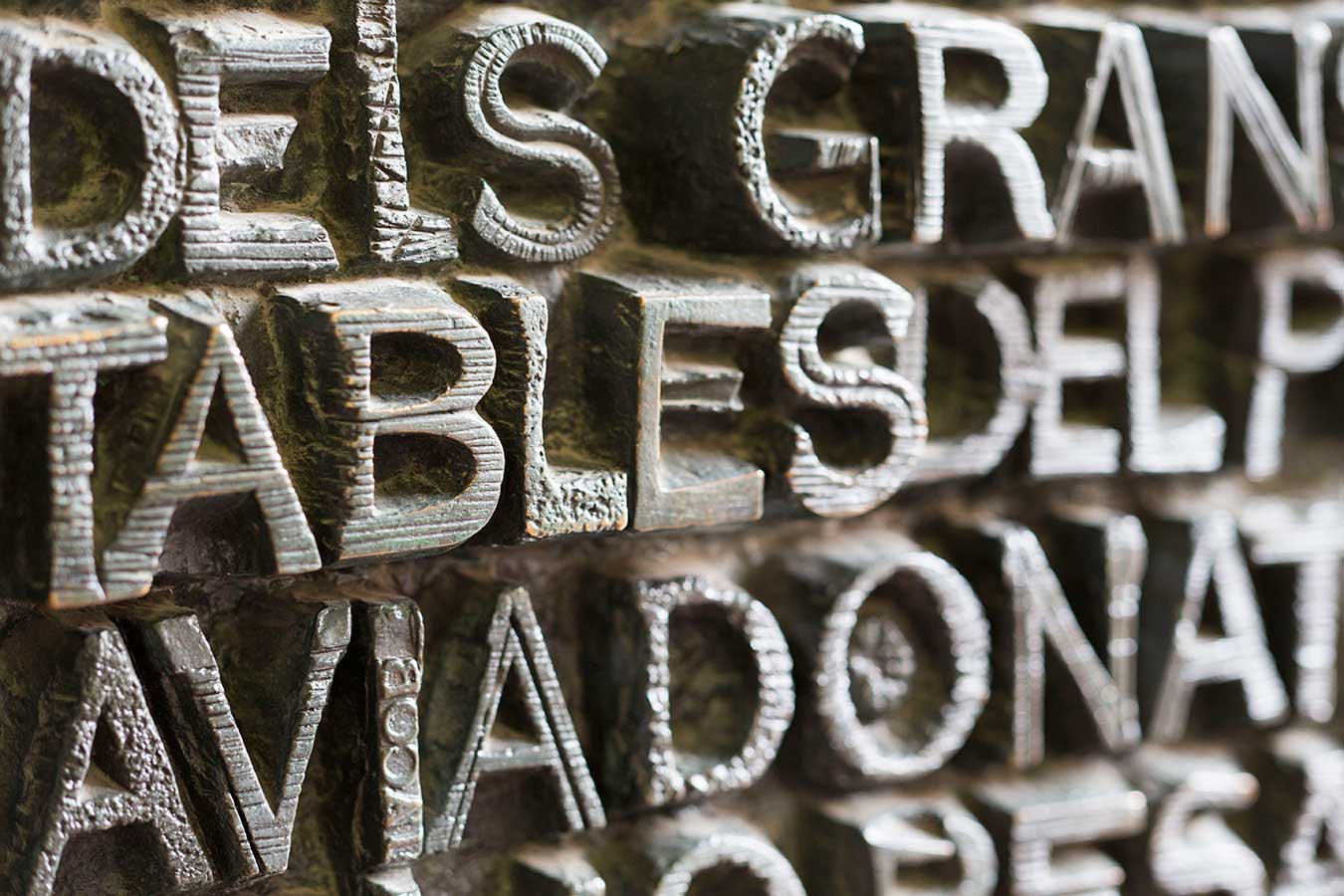
Some of the best views of the Sagrada Familia church are to be found in the nearby Hotel Ayre Roselló. The hotel has a roof top terrace and from here you can enjoy beautiful views of the church, seated at a table and with a drink in your hand! Look at the photo below to see the views offered from the hotel
